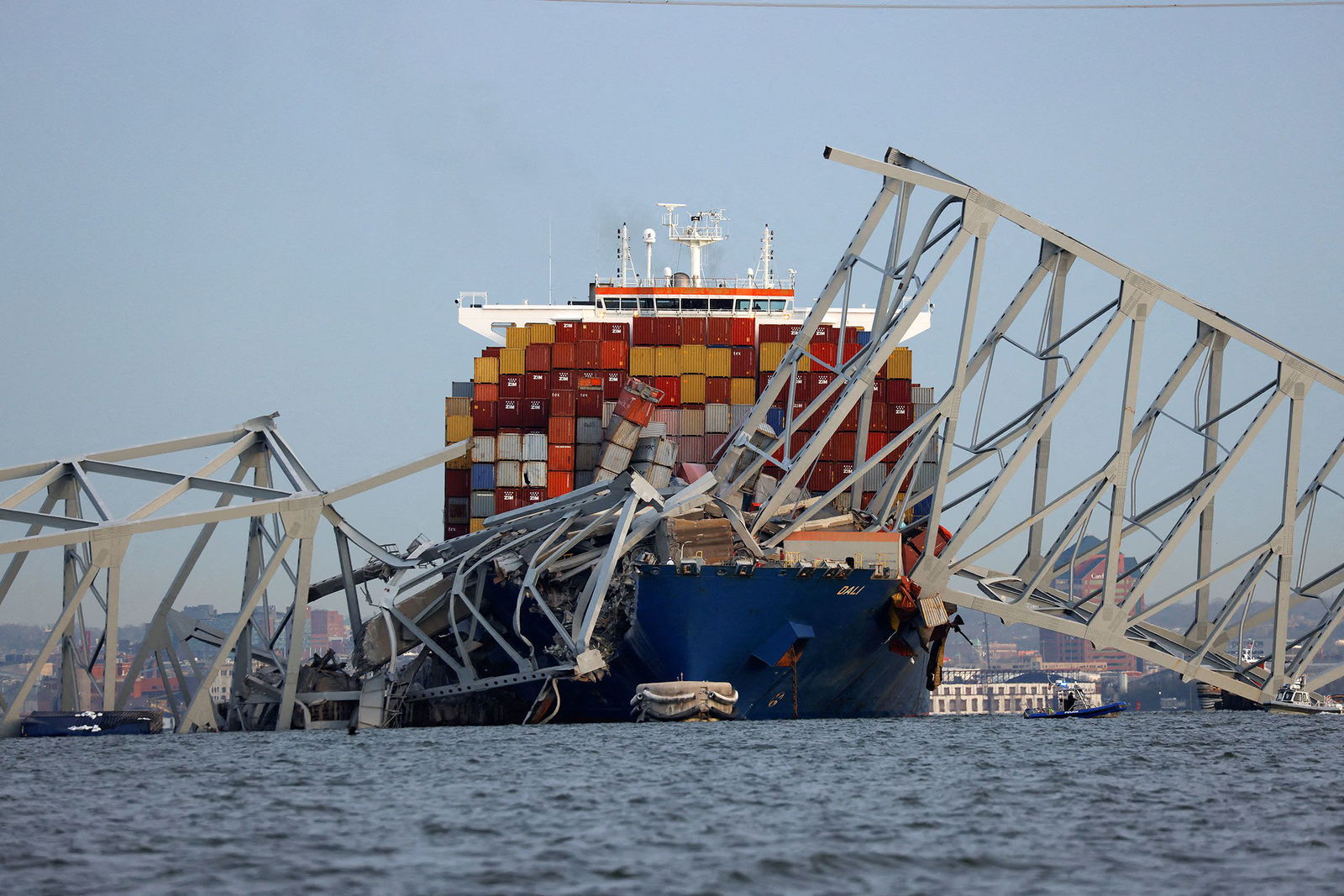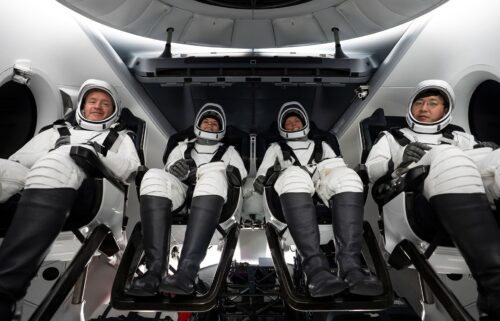One year after Baltimore bridge collapse, NTSB finds 68 US bridges need to be assessed for risk of collapse if hit by ship

A view of the Dali cargo vessel which crashed into the Francis Scott Key Bridge causing it to collapse in Baltimore
By Gabe Cohen, CNN
Washington (CNN) — Sixty-eight bridges across the US should be assessed to see if they are at risk of collapse if hit by a ship, transportation safety officials found, while urging the bridges’ owners to undertake immediate vulnerability assessments. The findings are part of the National Transportation Safety Board’s ongoing investigation into the collapse of the Francis Scott Key Bridge in Baltimore last year.
In the early hours of March 26, 2024, the container ship Dali lost power after leaving the Port of Baltimore and struck a pillar of the Key Bridge, causing it to collapse, killing six construction workers who fell into the Patapsco River. The Dali suffered a pair of catastrophic electrical failures minutes before the crash, according to a preliminary report released by the NTSB last May.
The Key Bridge was above the acceptable level of risk based on guidance established by the American Association of State Highway and Transportation Officials, or AASHTO, NTSB officials said.
“Had the Key Bridge’s owner, the Maryland Transportation Authority, or MDTA, conducted a vulnerability assessment based on recent vessel traffic as recommended by AASHTO, MDTA would have been aware that the Key Bridge was above the acceptable risk and would have had information to proactively reduce the bridge’s risk of a collapse and loss of lives associated with a vessel collision with the bridge,” NTSB officials said in a statement Thursday.
The NTSB identified 68 other bridges spanning waterways frequented by vessels like cargo ships that, like the Key Bridge, were built before 1991 and do not have a current vulnerability assessment. Owners of the bridges that have higher than acceptable risk ratings should create a plan to reduce that risk, Thursday’s findings say.
“Today’s report does not suggest that the 68 bridges – which were built before 1991 – are in danger of collapse,” NTSB officials said. “The NTSB is recommending that bridge owners with similar maritime traffic assess the risk of being struck by a large vessel like the 947-foot long Dali.”
The NTSB is also urging the Federal Highway Administration, the US Coast Guard and the US Army Corps of Engineers to establish a team to offer guidance and assistance to bridge owners on evaluating and reducing the risk of a collapse from a vessel collision.
Investigations into bridge collapse continue nearly a year later
Eight of the 21 Dali crew members, including the ship’s highest-ranking officers, remain in Baltimore nearly a year after the tragic incident, pending the findings of federal and local investigations.
While none of the crew members have been charged in connection with the disaster, investigators are still working to determine who might be responsible, and it is unclear when the remaining crew will get to leave.
CNN previously reported that the FBI and Coast Guard are looking into whether the ship’s crew failed to report the in-port power outage as part of a criminal investigation, according to a US official familiar with the matter.
In October, the ship’s Singaporean owner, Grace Ocean Private Limited, and manager, Synergy Marine PTE LTD, reached a settlement with the US Justice Department agreeing to pay nearly $102 million to resolve a civil claim alleging that the companies’ cost-cutting and negligence in the ship’s maintenance led to the disastrous collision.
Justice Department prosecutors had alleged that the “tragedy was entirely avoidable,” pointing to alleged failures in the ship’s infrastructure.
In a court filing, prosecutors wrote that instead of fixing longstanding problems with their electrical transformer, the companies “jury-rigged their ship” with makeshift braces that repeatedly broke. And when those electrical transformers broke the night of the bridge collapse, a backup transformer should have restored power “within just a few seconds” but that safety feature had been “recklessly disabled,” they alleged.
The city of Baltimore has filed its own claim against the two companies, and the families of several of the victims have also said they intend to sue.
The Dali returned to service earlier this year after extensive repairs to the ship were completed.
The-CNN-Wire
™ & © 2025 Cable News Network, Inc., a Warner Bros. Discovery Company. All rights reserved.

